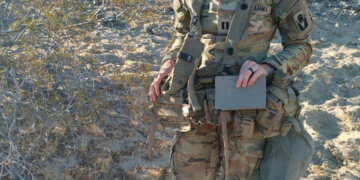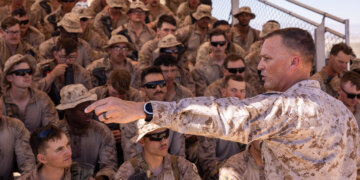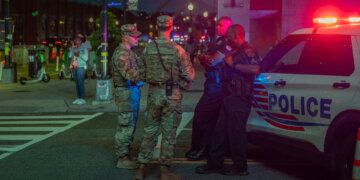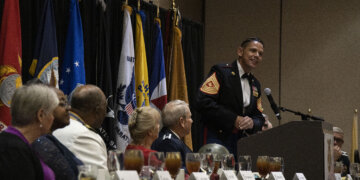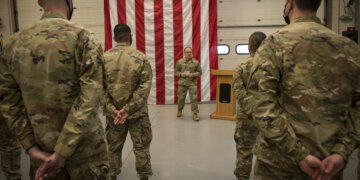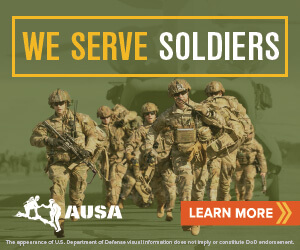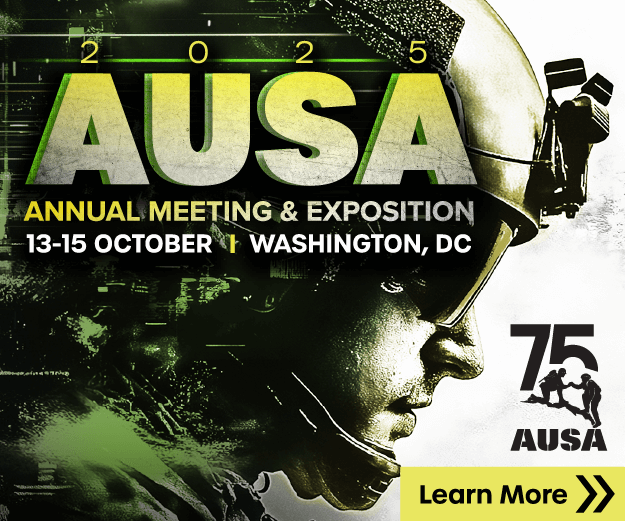Even though the 28th Chief of the National Guard Bureau doesn’t get to spend his days in the cockpit of an F-16 anymore, he does get to fulfill another passion: leading Airmen and Soldiers with the same laser focus on mission he was raised on in his native Massachusetts.
For almost the entirety of his life, Gen. Joseph Lengyel has held an intimate view of the military. He grew up as an Air Force kid, though in a twist of irony, his father, Air Force Lt.Col. Lauren “Laurie” Lengyel initially began his career with the National Guard — including a deployment with the Massachusetts National Guard during the 1958-61 Berlin Crisis. He then transferred to active duty to fly in Vietnam.
The family learned early on of the sacrifices that accompany military service when the elder Lengyel was captured on his 40th combat mission after ejecting from his aircraft. He would spend 2,044 days in captivity as a prisoner of war.
That did not deter the younger Lengyel from following in his father’s footsteps. Instead, by 1981, Lengyel was commissioned through the Reserve Officer Training Corps program at University of North Texas.
“Well, being in the Air Force was something I always knew I
wanted to do, and more particularly, flying fighter jets was something I always
wanted to do,” he said. “I come from an Air Force family — It was kind of the
family business. … It’s kind of what we do.”

Former defense secretary Ash Carter administered the oath of office to Gen. Joseph Lengyel who was accompanied by his wife, Sally, in Aug. 2016. Photo by MC1 Tim D. Godbee.
The citizen airman
Because of his career choices, Lengyel can relate to many of the 450,000+ he leads who are masters of transition, whether between active and Guard status, or activated status to demobilization. He, too, balanced life between the Air National Guard and the civilian sector.
“I always knew that I wanted to do this primarily as my life’s work, my job. Although I did transition to the Air National Guard after almost 10 years [on] active duty and realized that I could still maintain my career in the Air Force through the Air National Guard — so I joined the Texas Air National Guard in 1991. Then [I] was a part-time airline pilot, did all the things that a Guardsman does and then migrated back to full-time,” he explained.
As he’s come up through the ranks, Lengyel’s kept that personal
level of understanding at the forefront because, as he says, it’s the personnel
who are America’s most vital asset. He recently returned from a trip overseas
to deliver that exact message.

Lengyel talks with members of the Mississippi National Guard’s 155th Armored Brigade Combat Team in Kuwait on Thanksgiving Day. Photo by Sgt. 1st Class Jim Greenhill.
“I always look for an opportunity to go over there to see the deployed Soldiers and Airmen who are actually doing missions in the Middle East or wherever they are in the world. I’ve chosen the last three years to go to the Middle East because that’s where we’ve had the biggest number of deployed Guardsmen. We have about 30,000 that are deployed right now,” he said. “I want to go over there and serve them turkey and thank them for what they’re doing. You know I do believe that they are our most important weapon system. It’s not an F-22 or a tank or any other kind of weapon system, it’s the Soldiers and Airmen … let them know that I understand how hard it is. I’ve been a Guardsman with a civilian life.”
During his trip, Lengyel traveled to Kuwait, Iraq and Afghanistan. The overall purpose of the visit was to assess the Guard’s contribution to overseas operations, talk with troops and senior leaders about any issues they may have, and thank those who are forward deployed, according to Sgt. 1st Class Jim Greenhill, a photojournalist who accompanied the chief on his trip.
Times have changed
The mission of the National Guard has permanently evolved in
a post-9/11 military force, with units facing repeated deployments overseas.
But, there’s also the homeland demands evident throughout 2018 as Guardsmen
responded to hurricanes Florence and Michael, battled wildfires in California
and other western states, and assisted with Alaska’s earthquake response, among
other events.

Lengyel says Soldiers and Airmen of today should expect to always be on mission.
“We know it’s hard on your family, it’s hard on your employers,” he said. “… the National Guard is now this operational part of the Air Force and the Army, and we’re always continuously on mission, someplace. If the Army’s there, or the Air Force is there, the National Guard is there. And then the domestic piece on top of that. What we do for hurricanes and fires and floods and border security and all those things.”
In his talks with troops, he found morale to be high, which he attributes to soldiers and airmen getting to be “exactly where they want to be”.
“This is what they want to do, this is who we are. The force we are now. We’ve been at this for a long time,” he said. “This is what they train for. This is why they got in. You can argue that there was a time in our history where people didn’t expect to get deployed if you were in the reserve component, but now it is fully expected that they’re going to deploy. It is fundamental to retaining our force.”
State Partnership Program

Gen. Lengyel hosts Albania’s chief of defense, Brig. Gen. Bardhyl Kollcaku Albania is partnered with the New Jersey National Guard in the Defense Department’s State Partnership Program. Photo by Sgt. 1st Class Jim Greenhill.
Gen. Lengyel adds that at the center of the National Guard’s contributions to the defense department are the State Partnership Program, which focuses on relationship building.
“I think that when you talk about the things that we do—homeland, war fight, partnerships—they all kind of link together,” Lengyel explained. “When you look at Gen. Mattis’ strategy, his points about ‘we’re going to be a lethal and a ready force, we’re going to focus on allies and partners and we’re going to look at how we do things smarter,’ I think the National Guard state partnership program where we have relationships with 75 other countries is really a valuable tool for the Department of Defense, and really for the country.
We don’t fight any wars by ourselves. We have to have trust and we have to know each other,” he added.
To stay up-to-date on Gen. Lengyel and his travels, follow his Facebook page.
BY THE NUMBERS
* Since 9/11, the National Guard has supported nearly 900,000 overseas deployments to Iraq, Afghanistan, Kuwait, the Balkans, Guantanamo Bay, the Sinai, and other locations.
* The National Guard responded to 71 natural disasters in FY18, including eight hurricanes or tropical storms, 19 floods, 15 winter storms, 26 fires and two severe weather events.
Read comments






















